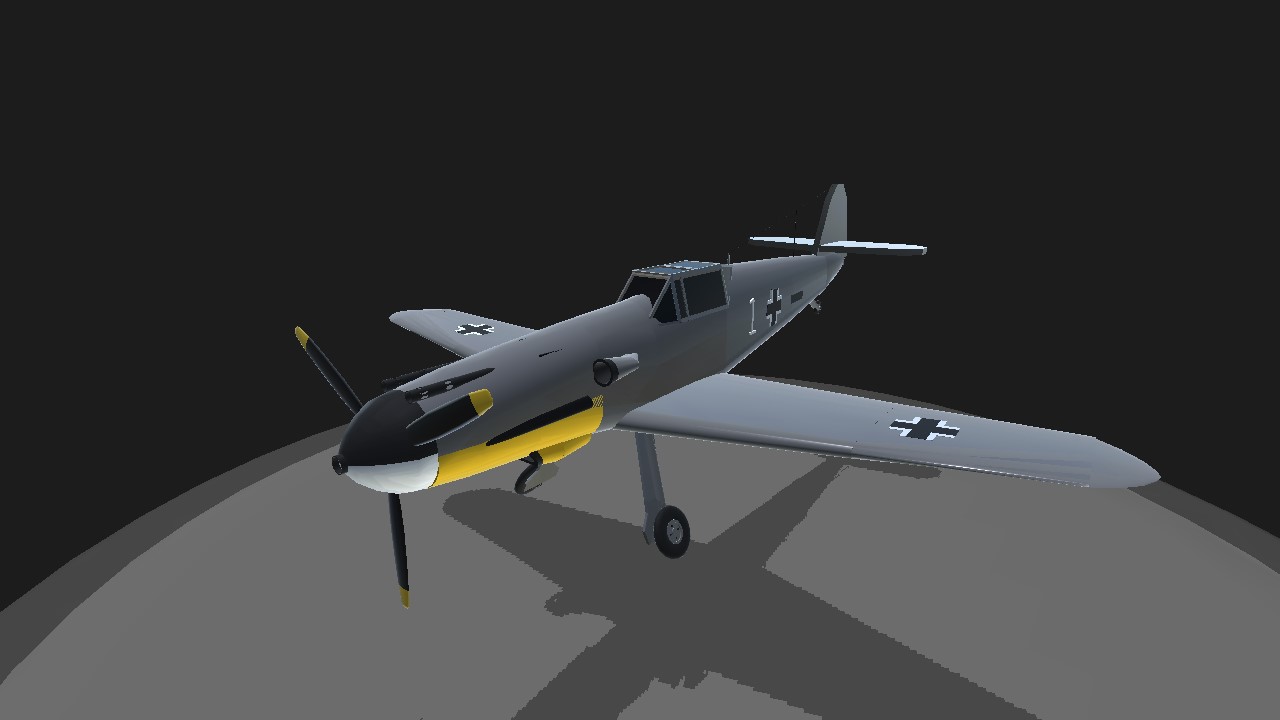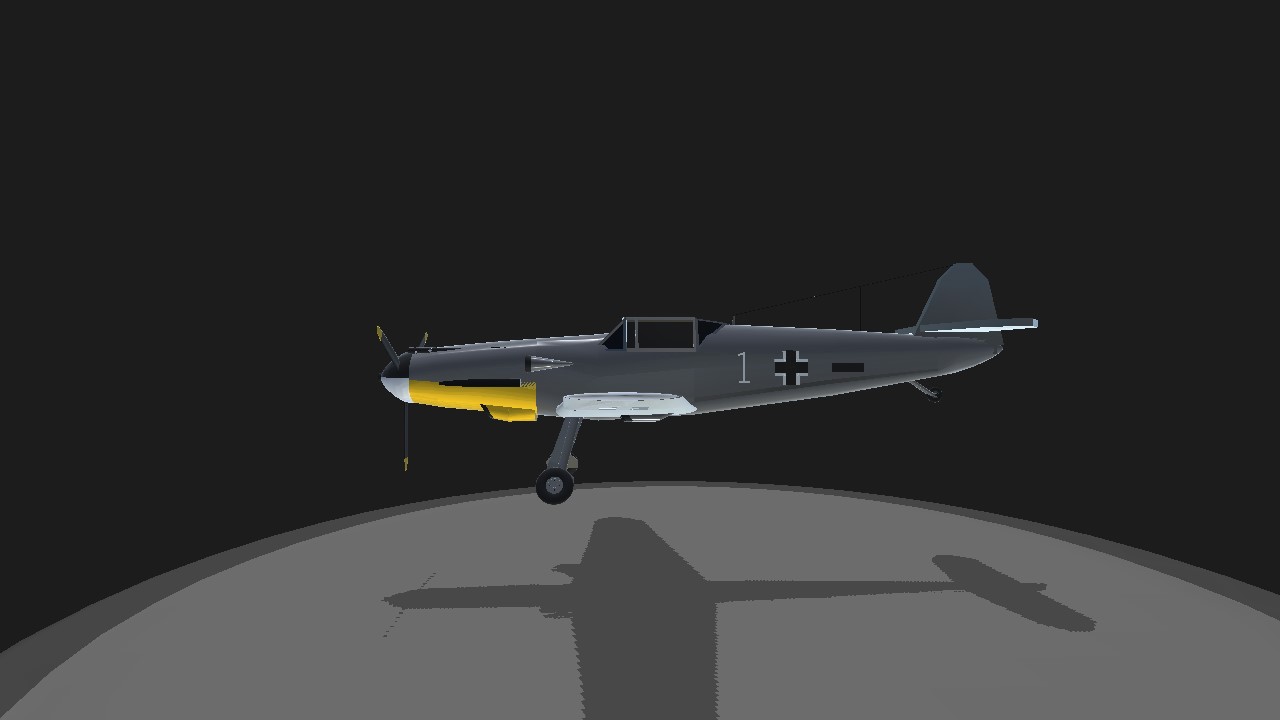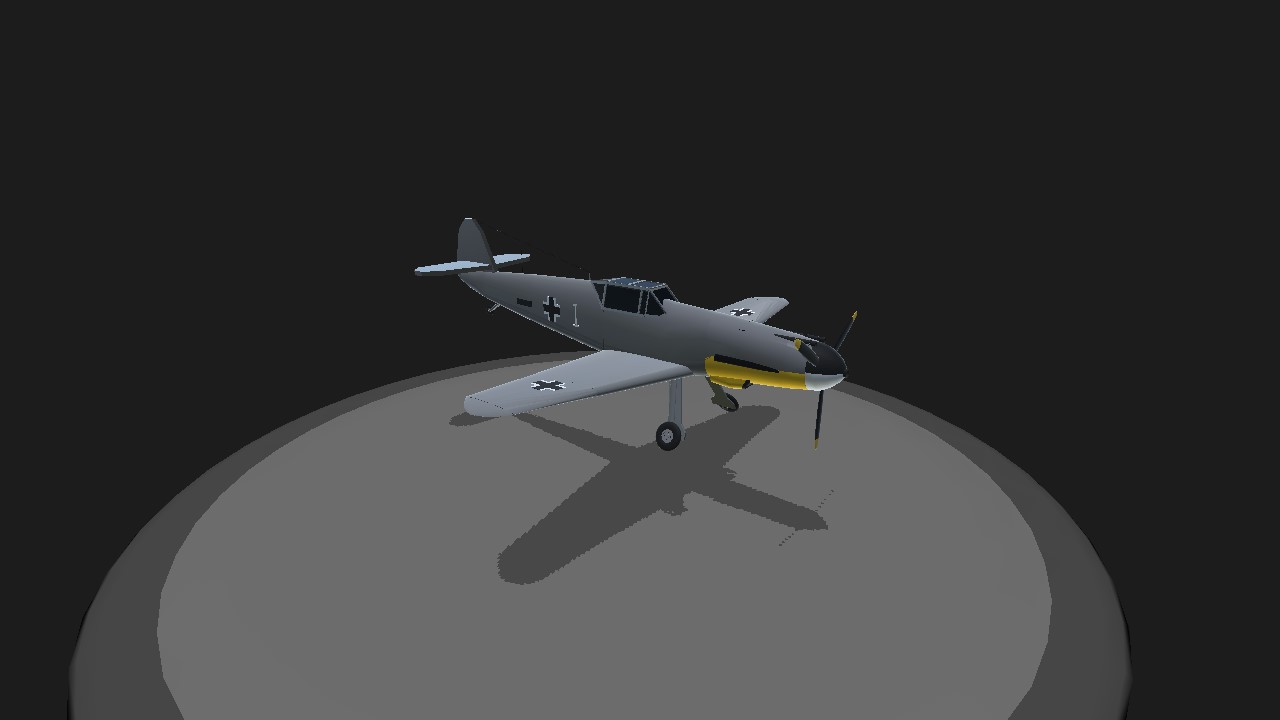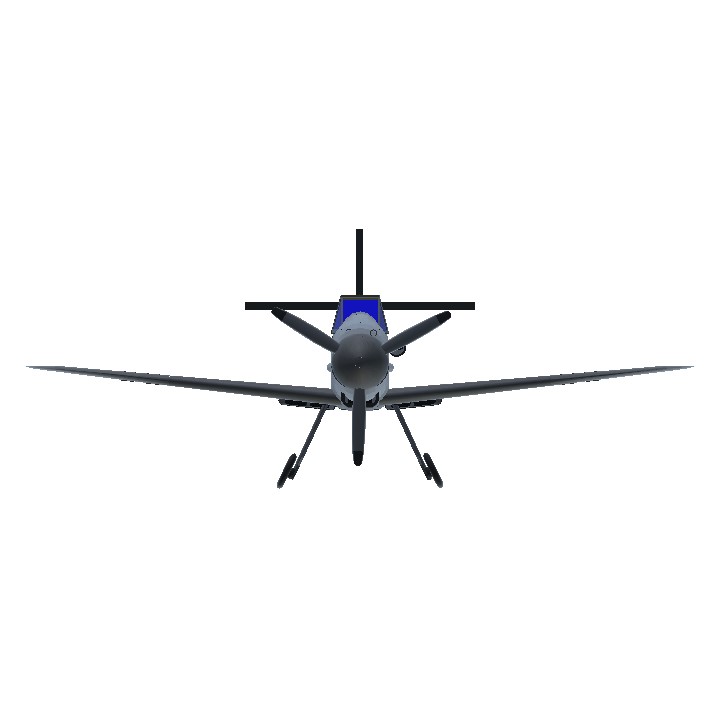-Scale 1:1
-Armed with 1x 30mm Motorkanone + 2x 13mm guns
-Use trim for stabilize aircraft
-feel free to edit your own livery
Wikipedia :
The Bf 109K was the last of the series to see operational duty and the last in the Bf 109 evolutionary line. The K series was a response to the bewildering array of series, models, modification kits and factory conversions for the Bf 109, which made production and maintenance complicated and costly – something Germany could ill-afford late in the war. The RLM ordered Messerschmitt to rationalise production of the Bf 109, consolidating parts, types, and so on, to produce a uniform, standard model with better interchangeability of parts and equipment. At the same time, the existing flaws of the design were to be remedied. Work on the new version began in the spring of 1943, and the prototype was ready by the autumn of that year. Series production started in August 1944 with the K-4 model, due to changes in the design and delays with the new DB 605D powerplant. The K-4 was the only version to be mass-produced.[95]
Externally the K series could be identified by changes in the locations of the radio equipment hatch,[Notes 4] which was moved forward and to a higher position between frames four and five, and the filler point for the fuselage fuel tank, which was moved forward to a location between frames two and three. In addition, the D/F loop was moved aft to sit between frames three and four on the top fuselage spine and a small circular plate above the footstep on the port side of the fuselage was deleted. The rudder was fitted as standard with a Flettner tab and two fixed tabs although some rare examples were not fitted with the fixed tabs. All K-4s were to be fitted with a long retractable tailwheel (350 × 135 mm/14 × 5 in) with two small clamshell doors covering the recess when the tail-wheel was retracted.
The wings featured the large rectangular fairings for the large 660 × 190 mm (26 × 7 in) main wheels. Small wheel well doors, originally planned for the G series, were fitted to the outer ends of the wheel bays, covering the outer wheels when retracted. These doors were often removed by front-line units. The radio equipment was the FuG 16ZY with an antenna mast fitted under the port outer wing and FuG 25a IFF as well as the FuG 125 Hermine D/F equipment. Internally, the oxygen bottles were relocated from the rear fuselage to the right wing.[96] Flettner tabs for the ailerons were also to be fitted to serial production aircraft to reduce control forces, but were extremely rare, with the majority of the K-4s using the same aileron system as the G series.[97]
Armament of the K-4 consisted of a 30 mm (1.18 in) MK 108 engine-mounted cannon (Motorkanone) with 65 rounds, and two 13 mm (.51 in) MG 131s in the nose with 300 rpg although some K-4s were fitted with the MG 151/20 as the Motorkanone.[98] Additional Rüstsätze, or equipment kits, such as a 300 L (80 US gal) drop tank (R III), bombs up to the size of 500 kg/1,100 lb (R I), underwing 20 mm Mauser MG 151/20 cannon gondola pods (R IV) or 21 cm (8 in) Wfr.Gr. 21 rockets (as on the Gustav models) could be carried after minimal preparations; the latter two however were rarely used by Bf 109 units at this stage of the war, although III./JG 26 were almost completely equipped with K-4s which were fitted with R IV:
...apparently all of the K-4s supplied to III./JG 26 were also equipped with 20 mm-guns in the hated underwing tubs. Uffz. Georg Genth's regular aircraft was a G-10, but on occasion he flew a K-4. He preferred the G-10 as a dogfighter, as the K-4's bulky armament sharply reduced its manouevrability.[99]
In addition there were problems with the 30 mm (1.18 in) MK 108 Motorkanone, which often jammed while the aircraft was manouevring in battle, leaving the pilot to fight on with the two heavy machine guns.[100] The standard Revi 16C reflector sight was fitted, which was slated to be replaced later by the EZ 42 Gyro gunsight, although this never happened.[101]
Power was provided in production K-4s by a Daimler-Benz DB 605DB/DC engine (very early K-4s used the earlier DM).The DB/DC engine had an adjusting screw allowing the engine to use either B4 + MW 50 Methanol Water injection equipment or C3 fuel (DB 605 DB) or C3 fuel, with or without MW 50 (DB 605 DC).[102] Using B4 fuel with MW 50, the DB generated an emergency power rating of 1,600 PS at 6,000 m (1,160 PS maximum continual at 6,600 m), and take-off power of 1,850 PS at 0 m, with a maximum supercharger boost of 1.8 ata.[103][104] The DB could also be run on higher octane C3 fuel, but use of MW 50 was forbidden.[104] The DC ran on C3 fuel and could generate a potential 2,000 PS, but only when using C3 fuel with MW 50 and a boost of 1.98 ata, otherwise the power ratings were similar to that of the DB.[103][Notes 5] A wide-chord, three-bladed VDM 9-12159A propeller of 3 m diameter was used, as on the G-6/AS, G-14/AS and G-10.[43]
Deliveries began in mid-October 1944. 534 examples had been delivered by the Messerschmitt A.G., Regensburg by the end of November 1944, and 856 by the end of the year.[105][106] Regensburg delivered a total of 1593 by the end of March 1945, after which production figures are missing.[citation needed] With such a high rate of production, despite continuous heavy fighting, by the end of January 1945 314 K-4s – about every fourth 109 – were listed on hand with the first line Luftwaffe units. Ultimately it was intended to equip all Bf 109 units with the 109K, which marked the final stage of 109 development before the jet age.[107]
Using MW 50 and maximum boost the Bf 109 K-4 was the fastest 109 of World War II, reaching a maximum speed of 710 km/h (440 mph) at 7,500 m (24,610 ft) altitude.[108] Without MW 50 and using 1.80 ata the K-4 reached 670 km/h (416 mph) at 9,000 m (26,528 ft).[109] The Initial Rate of climb was 850 m (2,790 ft)/min, without MW 50, and 1,080 m (3,540 ft)/min, using MW 50.[109] [Notes 6]
The Bf 109 remained comparable to opposing fighters until the end of the war. However, the deteriorating ability of the thousands of novice Luftwaffe pilots by this stage of the war meant the 109's strengths were of little value against the numerous and well-trained Allied fighter pilots.
Source : https://en.m.wikipedia.org/wiki/Messerschmitt_Bf_109_variants
Specifications
Spotlights
- Feanor 8.6 years ago
- Flash0of0green 8.6 years ago
- MAHADI 8.6 years ago
General Characteristics
- Predecessor SBD Dauntless V2
- Created On Android
- Wingspan 28.6ft (8.7m)
- Length 30.8ft (9.4m)
- Height 11.0ft (3.4m)
- Empty Weight 5,008lbs (2,271kg)
- Loaded Weight 7,195lbs (3,263kg)
Performance
- Power/Weight Ratio 1.873
- Horse Power/Weight Ratio 0.694
- Wing Loading 49.6lbs/ft2 (241.9kg/m2)
- Wing Area 145.2ft2 (13.5m2)
- Drag Points 3203
Parts
- Number of Parts 143
- Control Surfaces 5
- Performance Cost 586







@LZPS99 you can use my bf 109 f4 gun if you want or make the gun longer
@Bagas if i move gun back .. it will broke the propeller
@LZPS99 nice build if You want to make gun further back You can use my bf109 F4 gun to make it more realistic
@LZPS99 np
@MAHADI thanks:D
AWESOME...
@Delphinus thank sir
I do very much so
@Waemoth
@helilover03
@FgFg
@BaconAircraft
@jlewisifer
@Delphinus
@TheMutePlayer
@TTHHSSS
@TehDuck
Thank you all .. hope you like it 😉